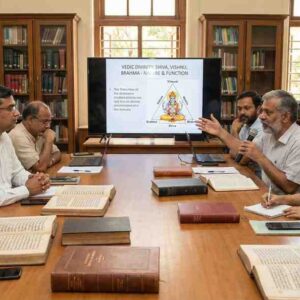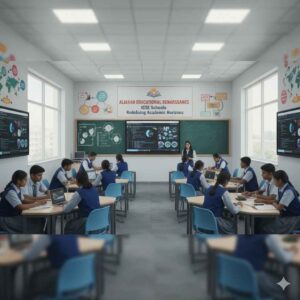A Digital Transformation in Indian Classrooms
The rise of EdTech platforms like BYJU’S, Vedantu, and Unacademy has reshaped the face of education in India. Once defined by blackboards and face-to-face interactions, classrooms have now moved to screens, bringing unprecedented accessibility and innovation. However, this transformation has also sparked a fundamental shift in the dynamics of education—most notably in the bond between teachers and students, and the increased reliance on screen time.
From Personal to Digital: The Evolving Teacher-Student Relationship
- Loss of Emotional Connection
- Traditional classrooms allowed teachers to observe, understand, and mentor students beyond academics. In digital learning environments, this personal connection is often reduced to pre-recorded lectures and AI-driven feedback.
- Live classes, while interactive, still lack the depth of in-person mentorship, making it harder for students to form meaningful bonds with their educators.
- The Role of AI Tutors
- Adaptive learning tools and chatbots have taken over tasks like doubt-solving and progress monitoring, further minimizing teacher involvement.
- While effective, these AI-driven solutions can never replicate the empathy and encouragement a human teacher offers.
“My daughter learns well on EdTech platforms, but she misses the joy of talking to her favorite teachers,”says Meera Iyer, a parent from Bengaluru.
The Screen Time Dilemma
- A New Kind of Classroom Fatigue
- The shift to online education has dramatically increased the time students spend on screens. On average, Indian students spend 4-6 hours daily on EdTech platforms, not including homework or recreational screen use.
- Prolonged exposure to screens has led to issues like eye strain, reduced attention spans, and even social isolation among students.
- Blurring Boundaries Between School and Home
- Unlike physical classrooms with clear start and end times, EdTech enables learning anytime, anywhere. While this flexibility is beneficial, it often leads to an “always-on” culture, where students struggle to separate study time from personal time.
Bridging the Gap: The Hybrid Model
- The Rise of Hybrid Learning
- Many Indian schools are now experimenting with hybrid models, combining online resources with physical classes to strike a balance between digital innovation and human connection.
- This approach allows students to benefit from the best of both worlds—access to personalized digital tools and face-to-face interactions with teachers and peers.
- Reinventing the Role of Teachers
- Teachers are increasingly adopting technology in classrooms, using digital tools to enhance lessons while maintaining their role as mentors.
- Training programs for teachers are essential to ensure they can navigate this new digital landscape effectively.
The Socio-Economic Divide
While urban schools and students adapt quickly to EdTech, rural India still faces challenges:
- Connectivity Issues: Many rural areas lack reliable internet, leaving students unable to access digital classrooms.
- Affordability Barriers: High costs of smartphones, tablets, and EdTech subscriptions make it difficult for underprivileged families to keep up.
- Teacher Shortages: In rural areas, where teachers are already scarce, the digital gap exacerbates the lack of personal mentorship.
What India Can Do to Balance EdTech’s Influence
- Emphasize Human-Centered Learning:
- Schools and EdTech providers must prioritize the teacher-student bond, even in digital settings, through live mentoring sessions and collaborative projects.
- Limit Screen Dependency:
- Encouraging breaks and offline learning activities can help reduce the negative effects of excessive screen time.
- Make EdTech Accessible:
- Partnerships between the government and EdTech platforms can ensure affordable devices and internet access for rural students.
- Focus on Hybrid Models:
- Combining digital resources with in-person learning can help maintain the emotional and social aspects of education while leveraging the benefits of technology.
Conclusion: Redefining Education in India
EdTech has undeniably revolutionized education in India, making learning more personalized and accessible. However, this transformation comes with its challenges—especially in maintaining the human connection that defines meaningful education and managing the increasing reliance on screens.
As India navigates this digital revolution, the focus must shift to creating an education system that balances innovation with emotional well-being, ensuring students thrive both academically and personally.
What does the future of education look like for India?













